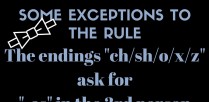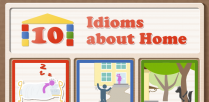Comma splices are considered an error in English grammar, but they are easy to spot and easy to fix. With the help of the infographic, learn to smooth your writing’s flow and add clarity by joining clauses, identifying a run on sentence and ridding your writing of those dreaded comma splices.
To download high resolution poster click here
What is a Comma Splice?
Two complete, closely related sentences can be joined together, but they should never be “spliced” together with a lone comma.
Incorrect: “Frank caught three fish from the dock, Jim caught two fish from the boat.”
How to Correct the Sentence Containing a Comma Splice
The simplest way to fix comma splicing is to form two complete sentences.
“Frank caught three fish from the dock. Jim caught two fish from the boat.”
Another fix is to replace the offending comma with a semi-colon. When using semi-colons, both ideas must be closely related, and the result is even better if one idea relies on the other or if there is a comparison between the two.
Good: “Frank caught three fish from the dock; Jim caught two fish from the boat.”
Better: “Frank caught three fish from the dock; Jim had to spend time rowing and only caught two fish from the boat.”
Coordinating Conjunctions
Another fix is to leave the comma in and add a coordinating conjunction. There are seven to choose from, and they can be remembered by the initials “fanboys”: for, and, nor, but, or, yet and so.
“Frank caught three fish from the dock, and Jim caught two fish from the boat.”
What Are Run On Sentences?
A comma splice is considered by many to be a run on sentence, as are sentences that need commas. Each of the following sentences is a run on and incorrect:
“Frank caught a bluegill Jim caught a bass.”
“Frank’s bluegill was small, Jim’s bass was very large.”
“They caught enough fish they ate them on the shore for lunch.”
The Independent Clause
An independent clause can stand alone as a complete sentence and is generally very short. Each example shown so far has been composed of independent clauses. Just as eliminating comma splices and run ons can break up overly long sentences, knitting independent clauses together can assist a choppy paragraph.
The period fix for the original sentence is correct, but it sounds stilted. Periods signal a full stop, while the semi-colon and comma/conjunction signal a pause. Improve the flow of writing by joining short, related clauses. Compare the “texture” of these examples:
“Jim gave his bass to the cat. The cat would not eat it.”
“Jim gave his bass to the cat, but the cat would not eat it.”
Putting it all Together
The following paragraph is a wreck:
“Jim wanted to fish from the boat. Frank wanted to fish from the dock. For the last few hours one was on the dock one was on the boat.”
Suggested repair:
“Jim wanted to fish from the boat, but Frank wanted to fish from the dock. For the last few hours, one was on the dock, and one was in the boat.”
If a sentence or paragraph is fighting back, try rewriting it completely. The final example can be rewritten in a number of ways that still convey the same basic ideas. Can you suggest one?




![10 Confusing Homonyms: Part I [infographic]](https://www.grammar.net/wp-content/uploads/2013/07/homonyms_small-01-308x95.png)



